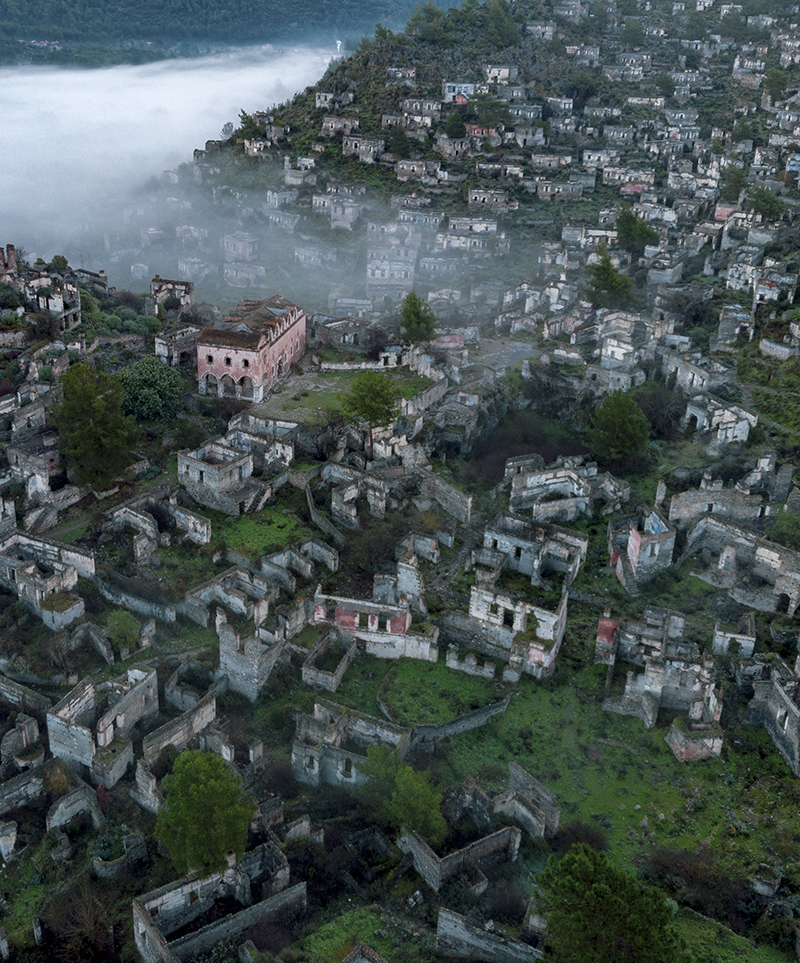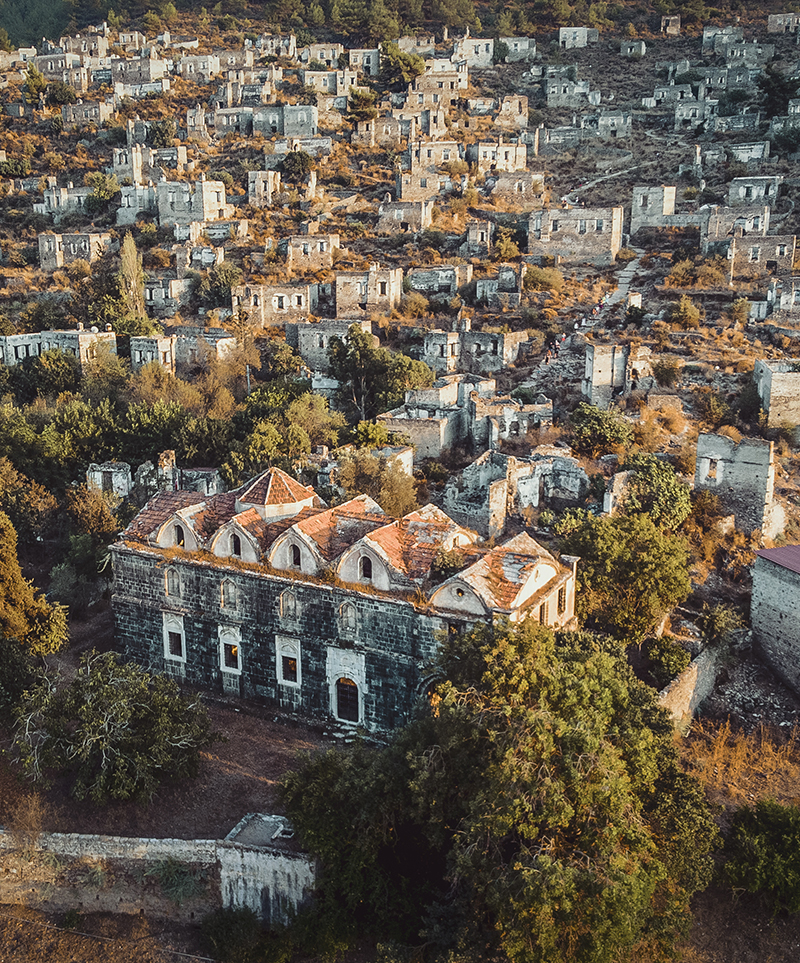THE VILLAGE
.Kaya lies just 10 km from Oludeniz. It was built on the site of the ancient Lycian city of Karmylassos and later inhabited by Byzantine Christians and known as Levissi until 1923.
After the Turkish War of Independence, the Turkish and Greek governments agreed on a population exchange. Greek Orthodox believers moved to mainland Greece, and Moslem families of western Thrace moved to the villages the Christians had left The village’s name is now changed to KAYA….translating as ‘rock’…which describes the site…set on a limestone escarpment overlooking a fertile plain.
The houses, churches and chapels are still partly intact, ranging panoramically round the slopes of three hills overlooking the plain. The site is now preserved as a ‘museum village’. The local Turks farm the land, produce apricots and almonds and provide visitors with local foods. Accommodation can be found in superior villas, stone cottages, apartments, and even tents. Barbecues, local wines and herb pancakes are all specialities of Kaya Village.
Some of the stone houses have been turned into workshops and ateliers which offer courses in painting, photography and pottery.
Camels and ponies are available for riding around the village.
Kaya longs for its past; narrow cobbled lanes wind up through tiers of blank stone houses and on the plain below ancient maple trees verge onto the village teahouse. As I sit there looking up at the houses I muse. ……







